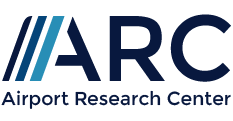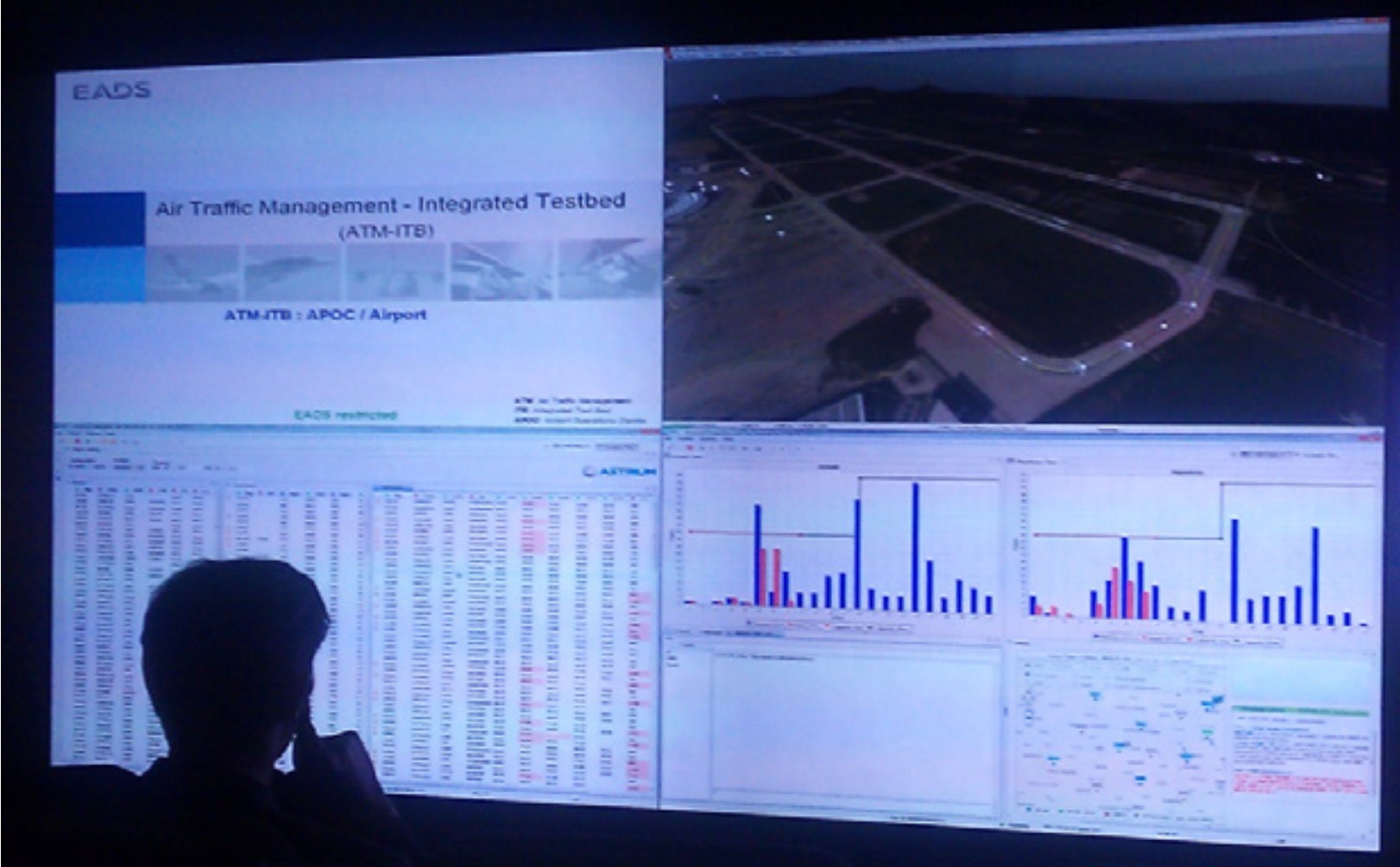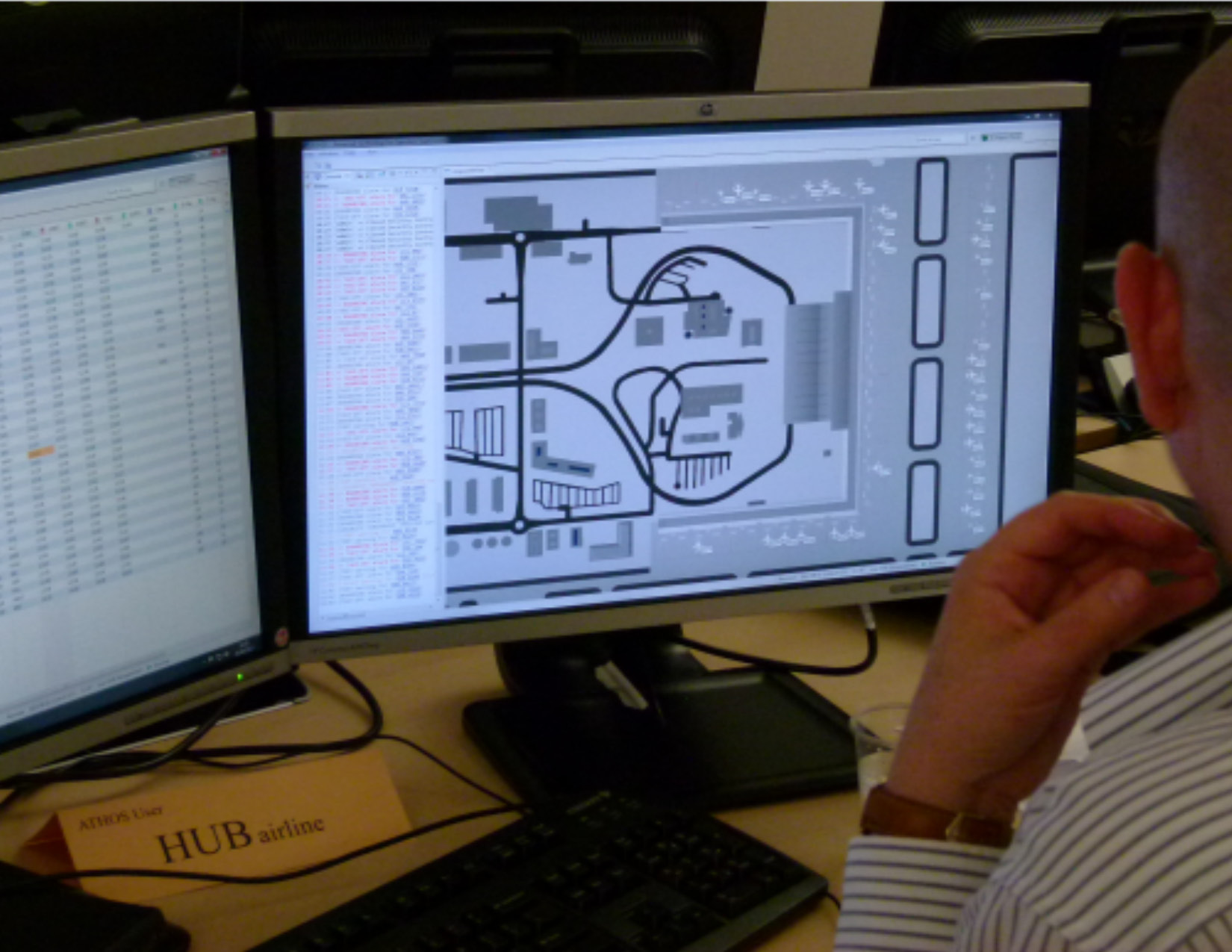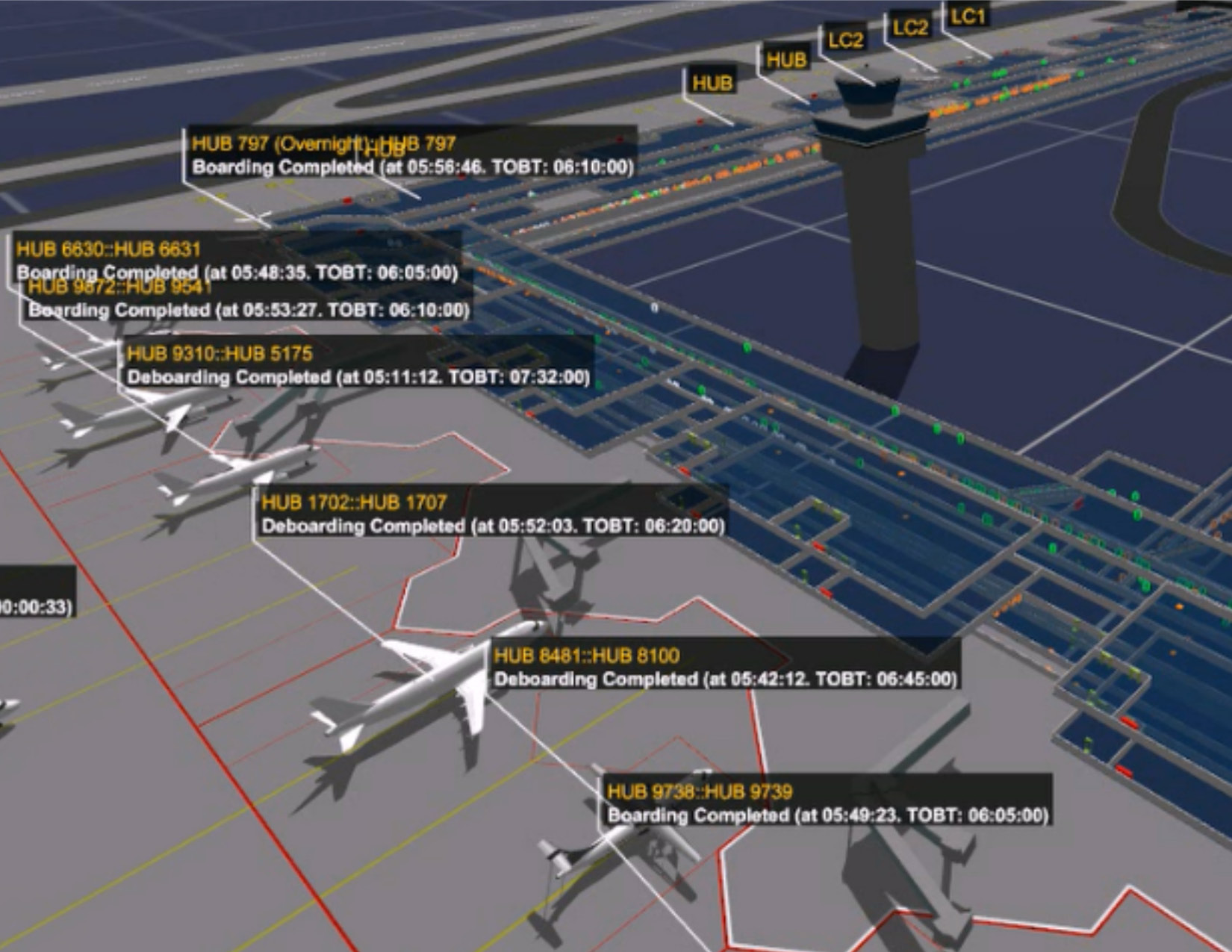
Real time test and training platform
The potential for improvement of operational efficiency by introduction of A-CDM, Total Airport Management (TAM), and improved, performance based airport management is estimated up to 15-20%. An individual adaptation of the concepts and development of specific management procedures, the training of management and operational staff and selection of the right tools is essential to facilitate and speed up the digital transformation.
In order to support these requirements, the CAST airport simulation software offers modules in order to provide an APOC Test and Training Platform. User defined scenarios of airside and terminal operations can run in real or fast time while being controlled from external AOC or APOC interfaces. Several connected interfaces for different APOC stakeholders are provided in cooperation with ArianeGroup.
Key features of the CAST APOC Simulation Solution
- Virtual airport APOC environment
- Including traffic and processes of air, airside and terminal
- Real time control by individual stakeholder dashboards and interfaces
- Includes: airport operator, airline, ATC, ground handling, terminal management and more
- Free and flexible configuration of environment and scenarios based on CAST Technology
For a deeper insight, please watch the video produced by CDG/ADP (Aéroports de Paris)
Facts & Benefits
- Well tested management procedures and APOC tools
- Mutual understanding and optimized cooperation between stakeholders
- Reduced management and resource cost
- Tested and trained procedures for disruption management
- Less delays, better safety, higher customer satisfaction and higher revenues
As part of the digital transformation at airports the CAST based APOC Simulation fills a gap by providing a unique hybrid system that can combine fast-time and real- time gaming simulation. In scenario sessions users monitor operations via performance dashboard and e.g. can trigger (A-CDM) control actions: flights can be shifted, cancelled and reallocated, and the effect on several KPIs can be monitored. The tool also provides interfaces to use or connect (external) systems, such as a gate and check-in disposition or departure management system.
By integration and application of predictive or what-if tools like the ARC’s PAX FLOW SOLUTION or the SECURITY MANAGEMENT SOLUTION powered by CAST the benefits of such systems can be evaluated and proved.
Cost reductions do not result only from implementing well-tested concepts and support tools, but also from the testing itself, which is much cheaper than conventional methods such as real-life testing, which can be disruptive. The CAST APOC Simulation can be used for a large range of airport improvements, including demand and capacity balancing, airport control and predictability. Airport operators can design and select the best choices for their investments. Further keys to success are the training of workflows from different stakeholder perspectives as well as the practice of communication procedures and management of disruptive situations.
Fields of Application:
- Support of digital transformation
- Real and fast time simulation of an APOC/AOC (Airport Operational Center)
- Operational management concept validation
- Basic training of collaboration CDM / TAM
- Training of communication and cooperation
- Development and test of disruption management procedures (wheather, strike, terrorism)
- Optimized staff and resource management
- Testing and identification of relevant support tools BEFORE buying
- What-If and real time predictions (e.g. with SOLUTIONS powered by CAST)
- Research and student training
” The CAST tool has now been used as part of a number of simulations in collaboration with EUROCONTROL, Airbus and participating airports (LHR, CDG, MAD, BOD, TLS). The feedback from the airports during these simulations in relation to the CAST functionality is overwhelmingly positive. ”
Alan Marsden, EUROCONTROL
The CAST virtual APOC platform includes:
- CAST Aircraft
- CAST Terminal
- CAST Remote Interface (for realtime interaction with external interfaces)
- CAST Analysis and Dashboard
- Different APOC interfaces provided by ArianeGroup
Project Airports
- London Heathrow (see the video)
- Madrid Barajas
- Alicante
- Paris Charles-de-Gaulle (see the video)
- Toulouse
- Bordeaux
The APOC Simulation Solution is provided in cooperation with Airbus / ArianeGroup as part of SESAR.








